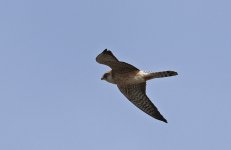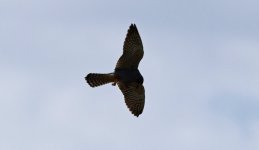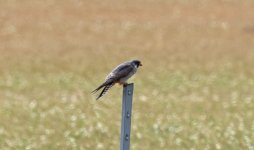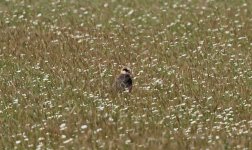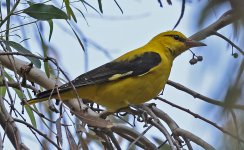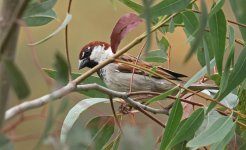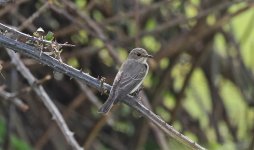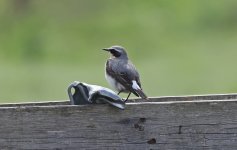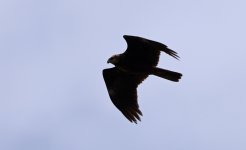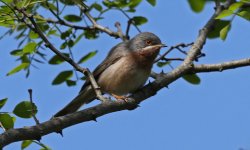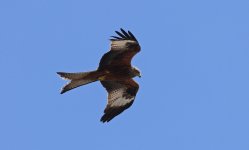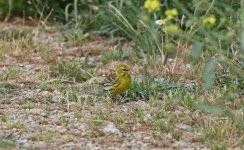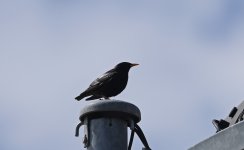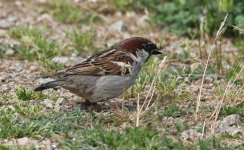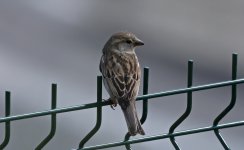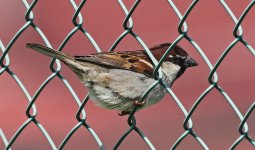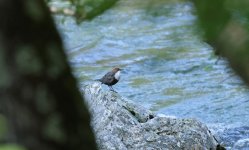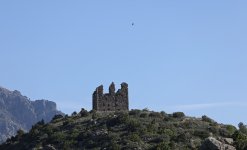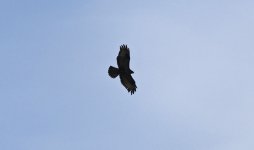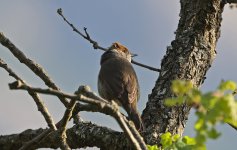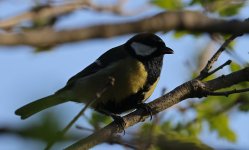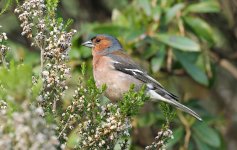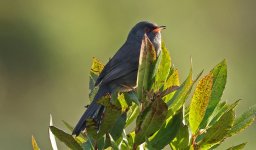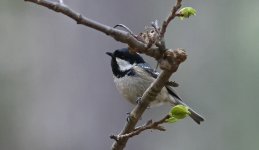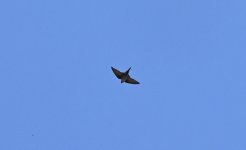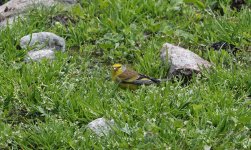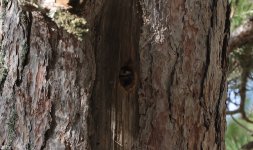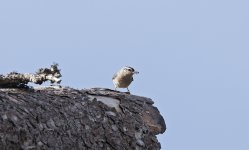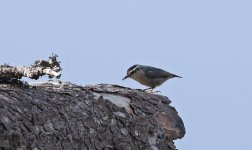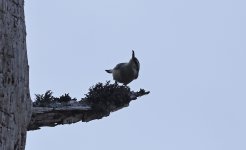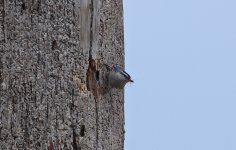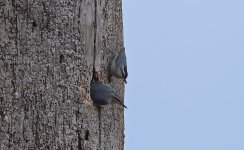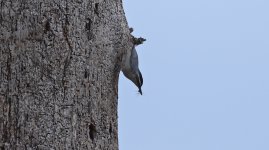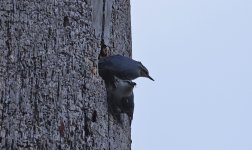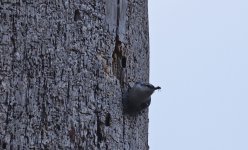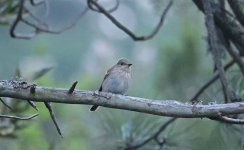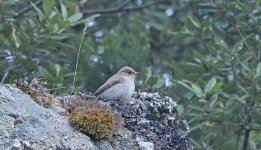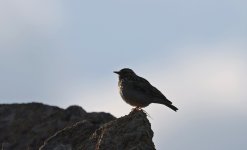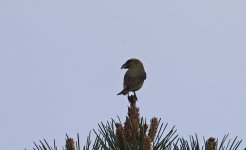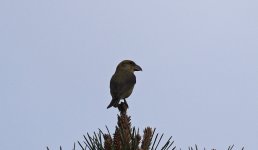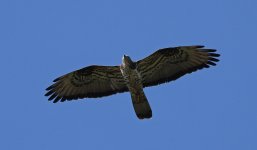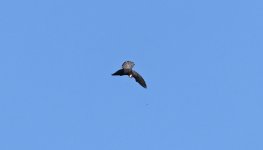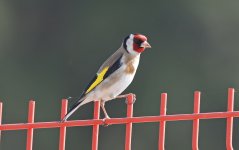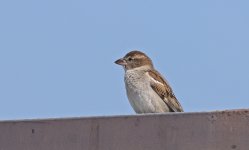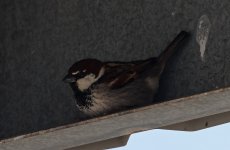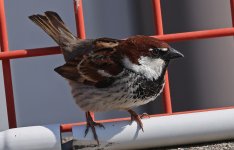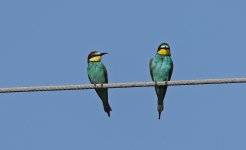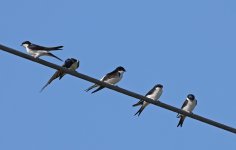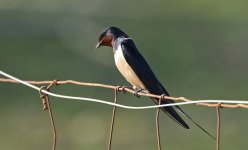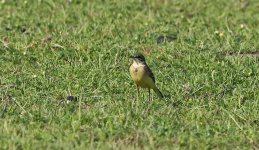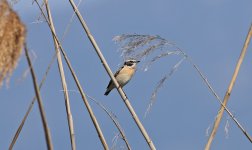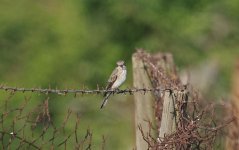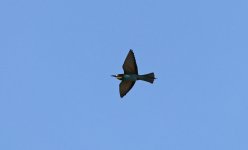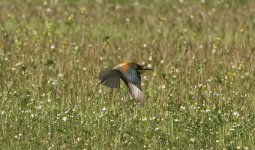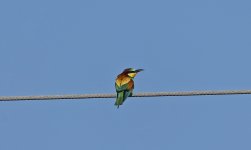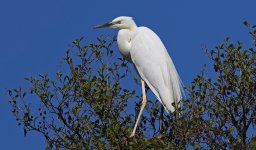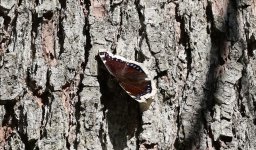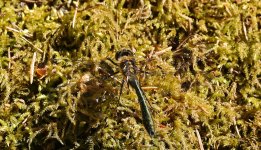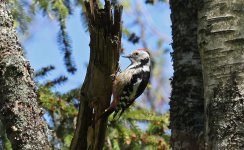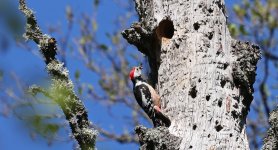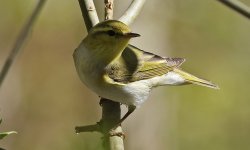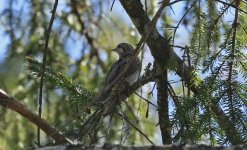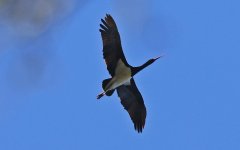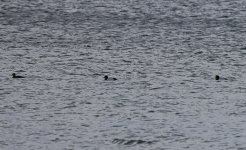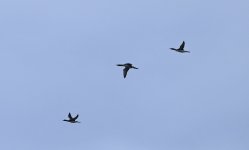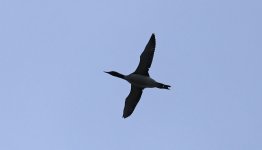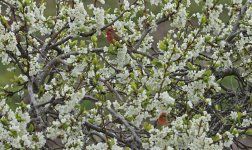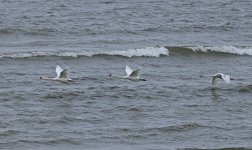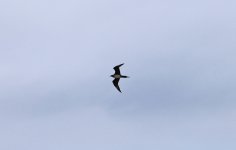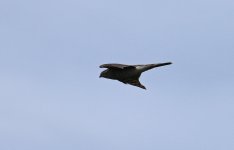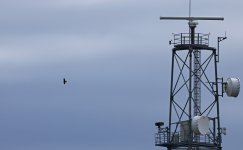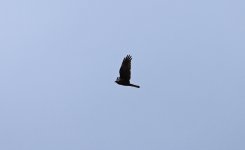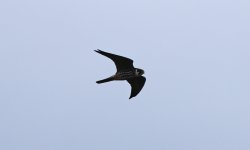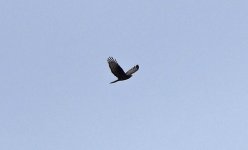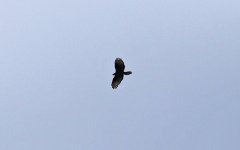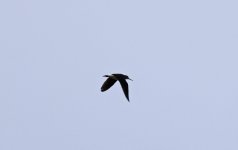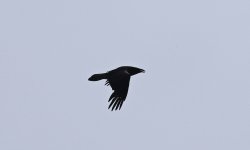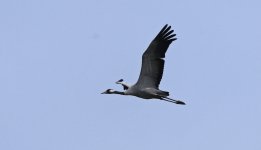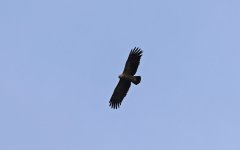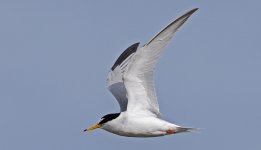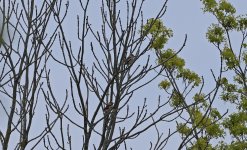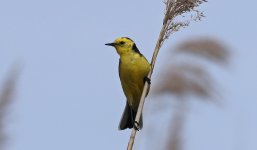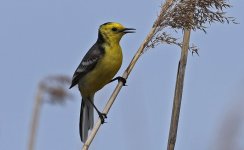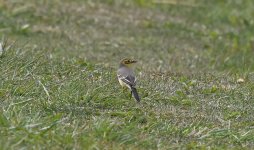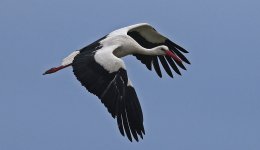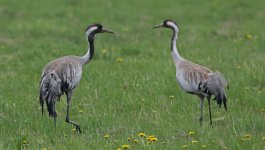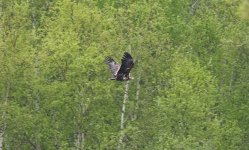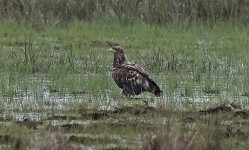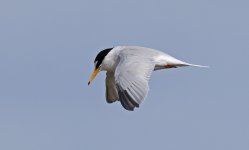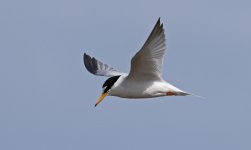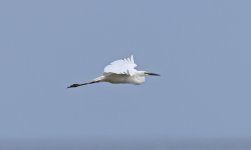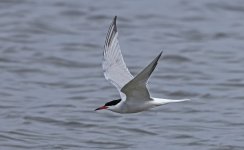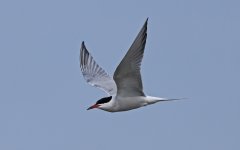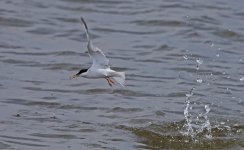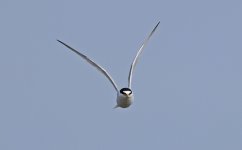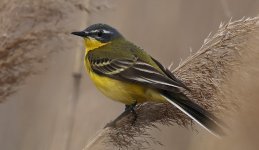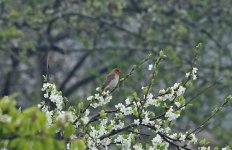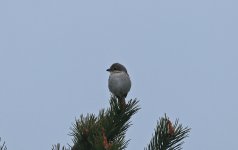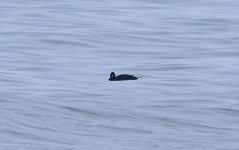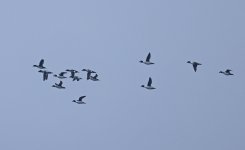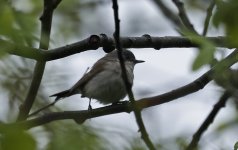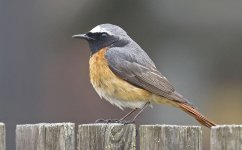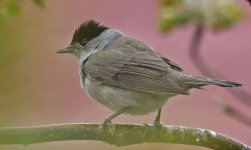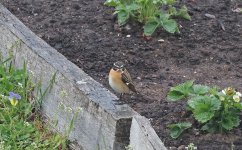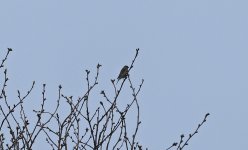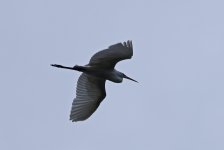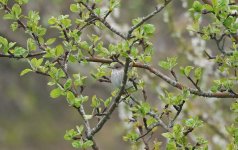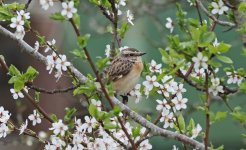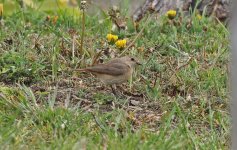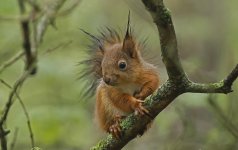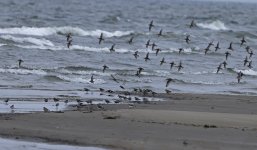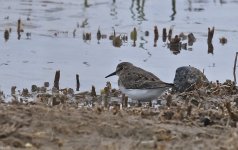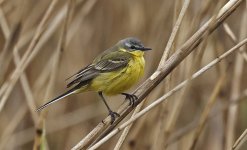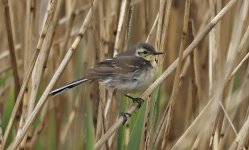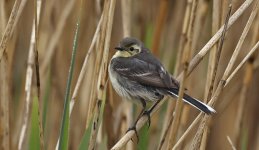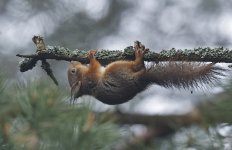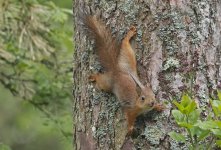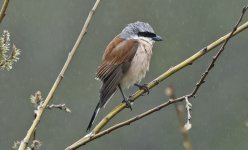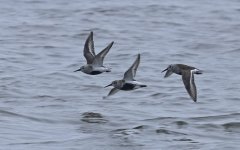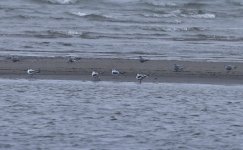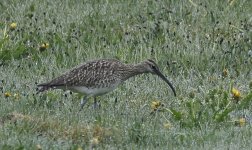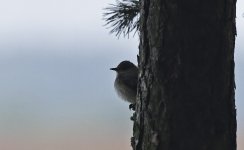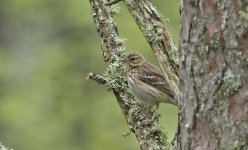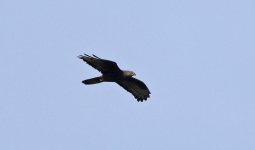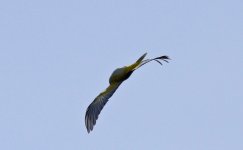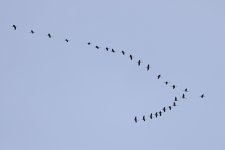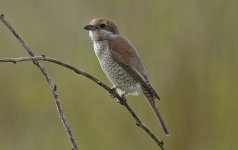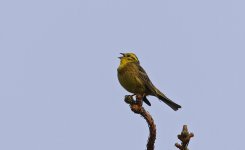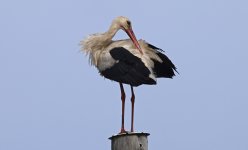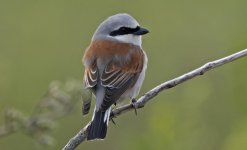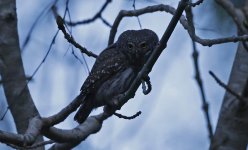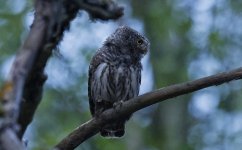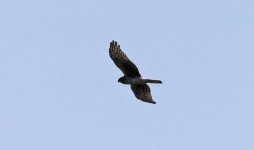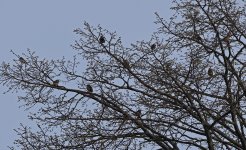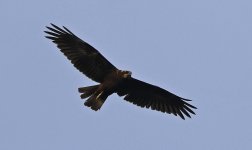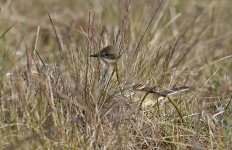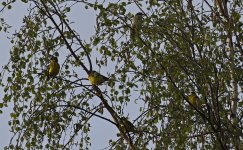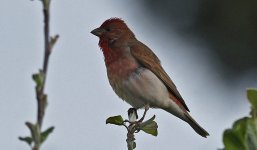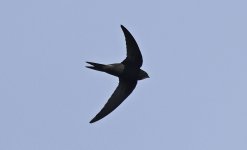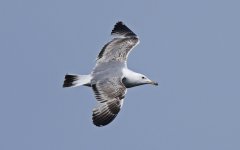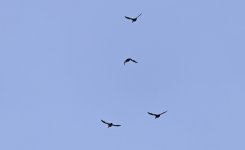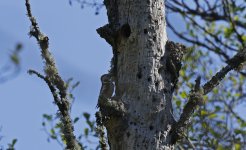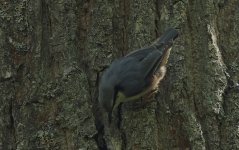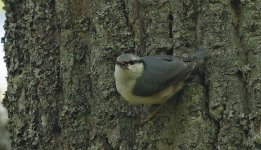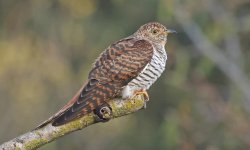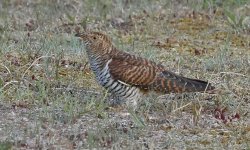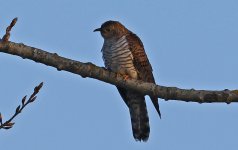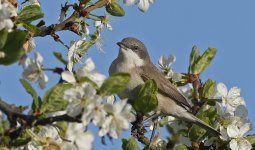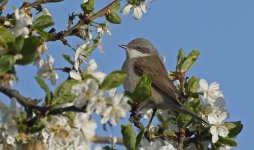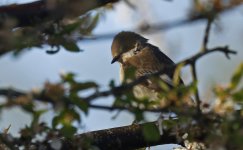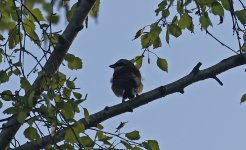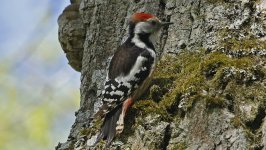Paul Chapman
Well-known member
8 May 2022
My companions tolerated a very early start. We were away from the hotel before 5.00am. Our back up California Quail sites were the Aghione area with sightings in 2021 and up to February 2022 (as at the date of our trip) – park about 42.112995 9.399046 & walk NNE along roads/paths to areas around 42.1167 9.40279 – and the Samuleto area with sightings up to at least August 2021 – around 42.098489 9.430065. But first, we were heading to Linguizetta. This was the hot tip site recommended by Valentin. En route, a Barn Owl was an addition to the trip list.
At around 5.30am, we parked up around 42.1666794 9.5432765. In the half light, the backdrop of birds included two Scops Owls and Nightjar as well as a Cuckoo and at least four Nightingales. An excellent soundtrack. It took us an hour to find a California Quail – shortly before Valentin kindly joined us – but then the floodgates opened. We saw around ten in total including a covey that crossed the road. It did look quite nice on the other side. 😊
The journey was pretty birdy. Five Red-crested Pochard in flight as well as Purple Heron and Squacco Heron were well received. A harrier was too brief for identification. Warblers included a couple of Moltoni’s as well as Great Reed, two Wood and Icterine Warblers. A couple of Serins jingled away. But the other highlight was our first attempt to tackle the local ‘Spotted Flycatchers’. After quite a bit of headscratching and expert assistance from Valentin, we settled upon both being Mediterranean Flycatchers. We would be staring at more during the balance of the trip. After around two hours, 38 species had been recorded. A cracking start to the day.
We headed on to Dunes de Prunete to enjoy some further birding around twenty kilometres further up the coast. On getting out of the car, another flycatcher was deemed a Spotted as was another further down the track. I was not finding these easy and wanted at some point to observe a singing Mediterranean Flycatcher to put my mind at rest…
At least four Nightingales added the musical backdrop as they did in a number of places on the coast during the break. As we walked down the reed filled ditch from the car to the coast, Little Grebe, breeding Coot, Red-crested Pochard, Common Sandpiper and Reed and Cetti’s Warblers were in evidence.
With our very early start and needing a break to refresh, we were only on site for an hour and a half and joined the vismig watch point for around an hour but the variety and scale of birds seen was beyond impressive. The combined full day totals of the volunteers can be found here… [Trektellen.org] - Migration counts & captures Extraordinary.
Over head during the period that we were there, I noted around 400 Swifts amongst which I recorded two Pallids and an Alpine. Of around eighty harriers, I recorded two Pallids and twenty Montagu’s with the balance being Marsh Harriers. Of around twenty five falcons, I recorded two Red-footed Falcons and two Lesser Kestrels with the balance being Common Kestrels. In addition, four European Honey Buzzards, Common Buzzard and four Red and single Black Kites brought the total raptors recorded well into three figures of ten species. About four hundred hirundines were made up mainly of Swallows but with around fifty each of both House and Sand Martins. Other birds noted moving north included five Grey Herons, forty Yellow Wagtails, thirty Bee-eaters, two Cuckoos and a Golden Oriole.
The majority of birds were observed when facing inland but some of the falcons passed behind us going along the shoreline or over the sea and when you turned and looked in that direction, there were more delights. I noted twenty Scopoli’s and four Yelkouan Shearwaters in addition to a single Ruff. Other birds I recorded included single Pheasant, Sardinian Warbler and Corn Bunting. Around fifty species in total but over a thousand individual birds was certainly the busiest migration of its nature that I had experienced. 😊 It would have been nice to have given it longer but sadly the nature of such a break rarely affords such opportunities.
Attached:-
1. California Quails crossing the road - who knows why...?
2. My companions ignoring a California Quail
3. The California Quail they ignored...
4. California Quail maybe showing too well
5. Great Reed Warbler
6. Icterine Warbler
7. Mediterranean Flycatcher - puzzling, puzzling, puzzling
8. Spotted Flycatcher
9. Red Kite
10. Red-crested Pochard
11. Female Common Kestrel
12. Male Common Kestrel
13. Female Lesser Kestrel
14. Red-footed Falcon
15. Female Montagu's Harrier
16. Male Montagu's Harrier
17 & 18. Honey Buzzards with accompanying Hooded Crow
My companions tolerated a very early start. We were away from the hotel before 5.00am. Our back up California Quail sites were the Aghione area with sightings in 2021 and up to February 2022 (as at the date of our trip) – park about 42.112995 9.399046 & walk NNE along roads/paths to areas around 42.1167 9.40279 – and the Samuleto area with sightings up to at least August 2021 – around 42.098489 9.430065. But first, we were heading to Linguizetta. This was the hot tip site recommended by Valentin. En route, a Barn Owl was an addition to the trip list.
At around 5.30am, we parked up around 42.1666794 9.5432765. In the half light, the backdrop of birds included two Scops Owls and Nightjar as well as a Cuckoo and at least four Nightingales. An excellent soundtrack. It took us an hour to find a California Quail – shortly before Valentin kindly joined us – but then the floodgates opened. We saw around ten in total including a covey that crossed the road. It did look quite nice on the other side. 😊
The journey was pretty birdy. Five Red-crested Pochard in flight as well as Purple Heron and Squacco Heron were well received. A harrier was too brief for identification. Warblers included a couple of Moltoni’s as well as Great Reed, two Wood and Icterine Warblers. A couple of Serins jingled away. But the other highlight was our first attempt to tackle the local ‘Spotted Flycatchers’. After quite a bit of headscratching and expert assistance from Valentin, we settled upon both being Mediterranean Flycatchers. We would be staring at more during the balance of the trip. After around two hours, 38 species had been recorded. A cracking start to the day.
We headed on to Dunes de Prunete to enjoy some further birding around twenty kilometres further up the coast. On getting out of the car, another flycatcher was deemed a Spotted as was another further down the track. I was not finding these easy and wanted at some point to observe a singing Mediterranean Flycatcher to put my mind at rest…
At least four Nightingales added the musical backdrop as they did in a number of places on the coast during the break. As we walked down the reed filled ditch from the car to the coast, Little Grebe, breeding Coot, Red-crested Pochard, Common Sandpiper and Reed and Cetti’s Warblers were in evidence.
With our very early start and needing a break to refresh, we were only on site for an hour and a half and joined the vismig watch point for around an hour but the variety and scale of birds seen was beyond impressive. The combined full day totals of the volunteers can be found here… [Trektellen.org] - Migration counts & captures Extraordinary.
Over head during the period that we were there, I noted around 400 Swifts amongst which I recorded two Pallids and an Alpine. Of around eighty harriers, I recorded two Pallids and twenty Montagu’s with the balance being Marsh Harriers. Of around twenty five falcons, I recorded two Red-footed Falcons and two Lesser Kestrels with the balance being Common Kestrels. In addition, four European Honey Buzzards, Common Buzzard and four Red and single Black Kites brought the total raptors recorded well into three figures of ten species. About four hundred hirundines were made up mainly of Swallows but with around fifty each of both House and Sand Martins. Other birds noted moving north included five Grey Herons, forty Yellow Wagtails, thirty Bee-eaters, two Cuckoos and a Golden Oriole.
The majority of birds were observed when facing inland but some of the falcons passed behind us going along the shoreline or over the sea and when you turned and looked in that direction, there were more delights. I noted twenty Scopoli’s and four Yelkouan Shearwaters in addition to a single Ruff. Other birds I recorded included single Pheasant, Sardinian Warbler and Corn Bunting. Around fifty species in total but over a thousand individual birds was certainly the busiest migration of its nature that I had experienced. 😊 It would have been nice to have given it longer but sadly the nature of such a break rarely affords such opportunities.
Attached:-
1. California Quails crossing the road - who knows why...?
2. My companions ignoring a California Quail
3. The California Quail they ignored...
4. California Quail maybe showing too well
5. Great Reed Warbler
6. Icterine Warbler
7. Mediterranean Flycatcher - puzzling, puzzling, puzzling
8. Spotted Flycatcher
9. Red Kite
10. Red-crested Pochard
11. Female Common Kestrel
12. Male Common Kestrel
13. Female Lesser Kestrel
14. Red-footed Falcon
15. Female Montagu's Harrier
16. Male Montagu's Harrier
17 & 18. Honey Buzzards with accompanying Hooded Crow
Attachments
-
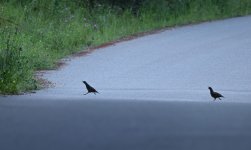 2022.05.08 001.jpg346 KB · Views: 32
2022.05.08 001.jpg346 KB · Views: 32 -
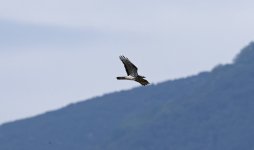 2022.05.08 018.jpg446.5 KB · Views: 31
2022.05.08 018.jpg446.5 KB · Views: 31 -
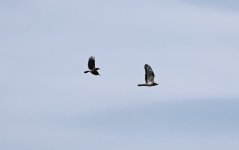 2022.05.08 017.jpg518.5 KB · Views: 24
2022.05.08 017.jpg518.5 KB · Views: 24 -
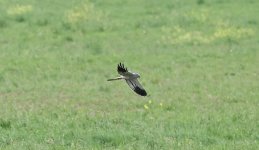 2022.05.08 016.jpg597.3 KB · Views: 22
2022.05.08 016.jpg597.3 KB · Views: 22 -
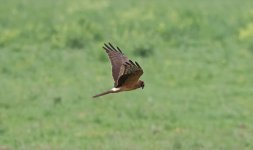 2022.05.08 015.jpg599.4 KB · Views: 20
2022.05.08 015.jpg599.4 KB · Views: 20 -
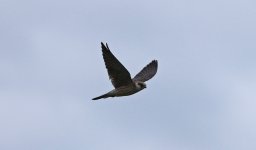 2022.05.08 014.jpg417.8 KB · Views: 21
2022.05.08 014.jpg417.8 KB · Views: 21 -
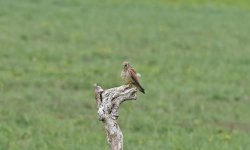 2022.05.08 013.jpg397 KB · Views: 21
2022.05.08 013.jpg397 KB · Views: 21 -
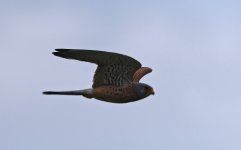 2022.05.08 012.jpg452.9 KB · Views: 20
2022.05.08 012.jpg452.9 KB · Views: 20 -
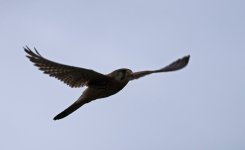 2022.05.08 011.jpg964.1 KB · Views: 18
2022.05.08 011.jpg964.1 KB · Views: 18 -
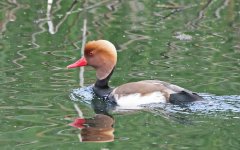 2022.05.08 010.jpg1.1 MB · Views: 15
2022.05.08 010.jpg1.1 MB · Views: 15 -
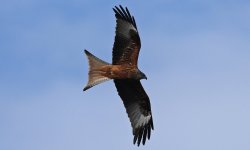 2022.05.08 009.jpg628.5 KB · Views: 22
2022.05.08 009.jpg628.5 KB · Views: 22 -
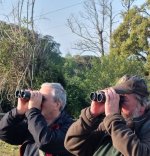 2022.05.08 002.jpg2 MB · Views: 27
2022.05.08 002.jpg2 MB · Views: 27 -
 2022.05.08 003.jpg760.8 KB · Views: 27
2022.05.08 003.jpg760.8 KB · Views: 27 -
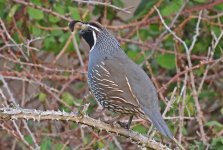 2022.05.08 004.jpg1.5 MB · Views: 22
2022.05.08 004.jpg1.5 MB · Views: 22 -
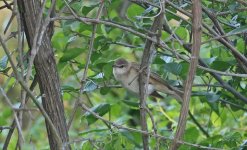 2022.05.08 005.jpg897.6 KB · Views: 22
2022.05.08 005.jpg897.6 KB · Views: 22 -
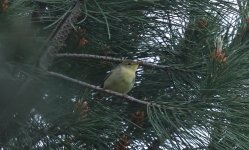 2022.05.08 006.jpg1.3 MB · Views: 26
2022.05.08 006.jpg1.3 MB · Views: 26 -
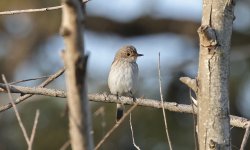 2022.05.08 007.jpg544.1 KB · Views: 23
2022.05.08 007.jpg544.1 KB · Views: 23 -
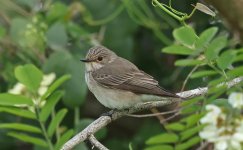 2022.05.08 008.jpg792.4 KB · Views: 31
2022.05.08 008.jpg792.4 KB · Views: 31




